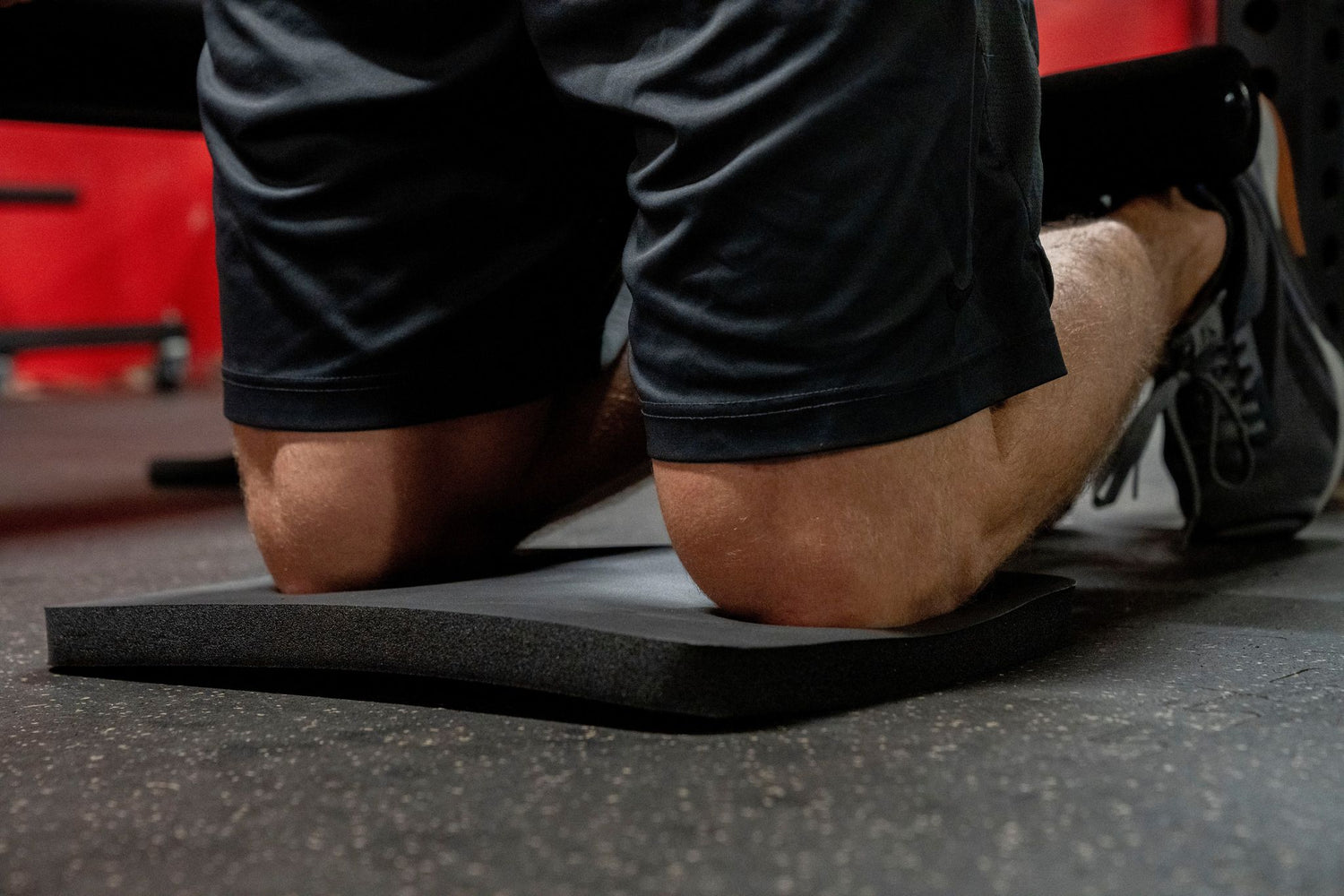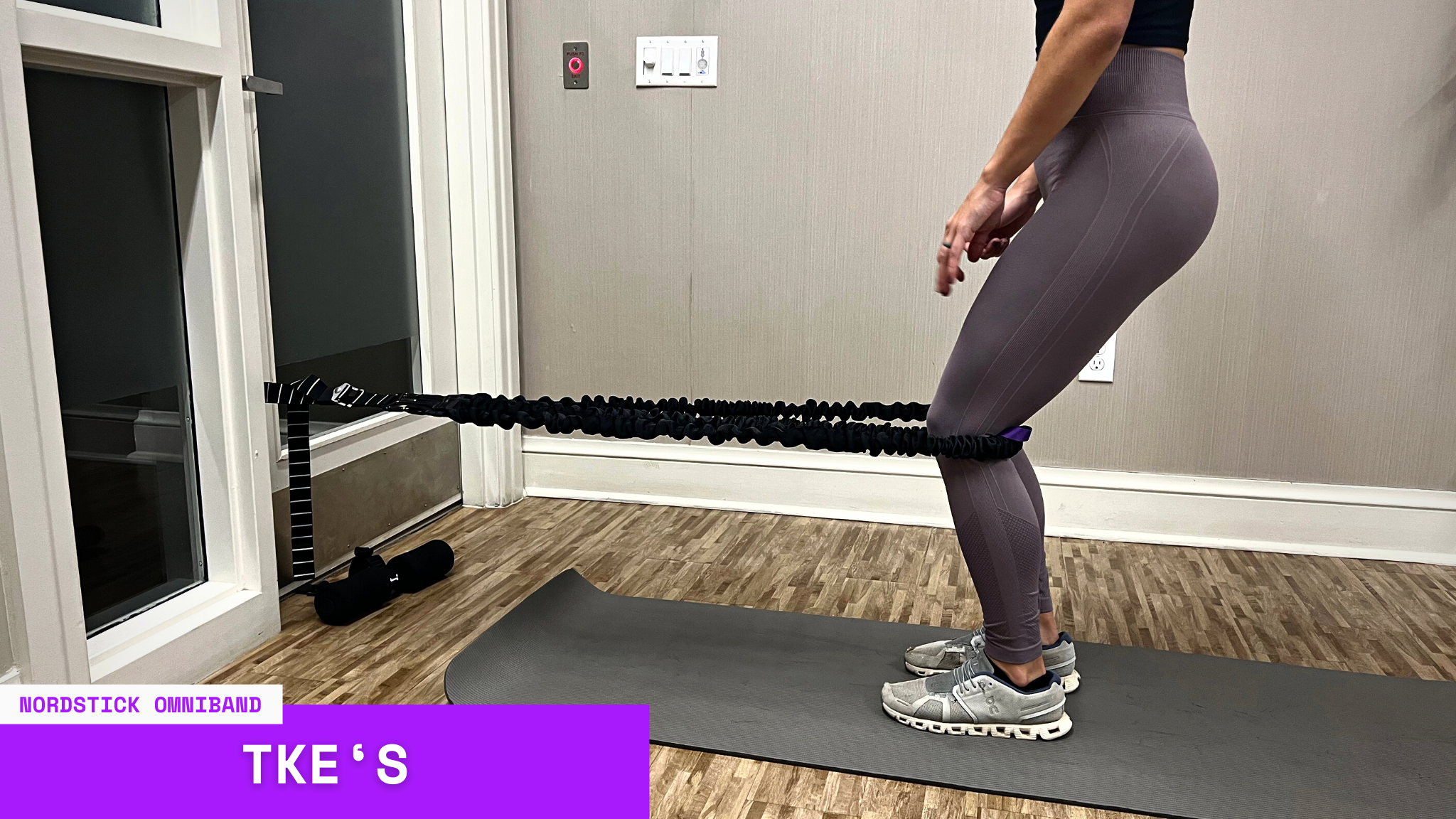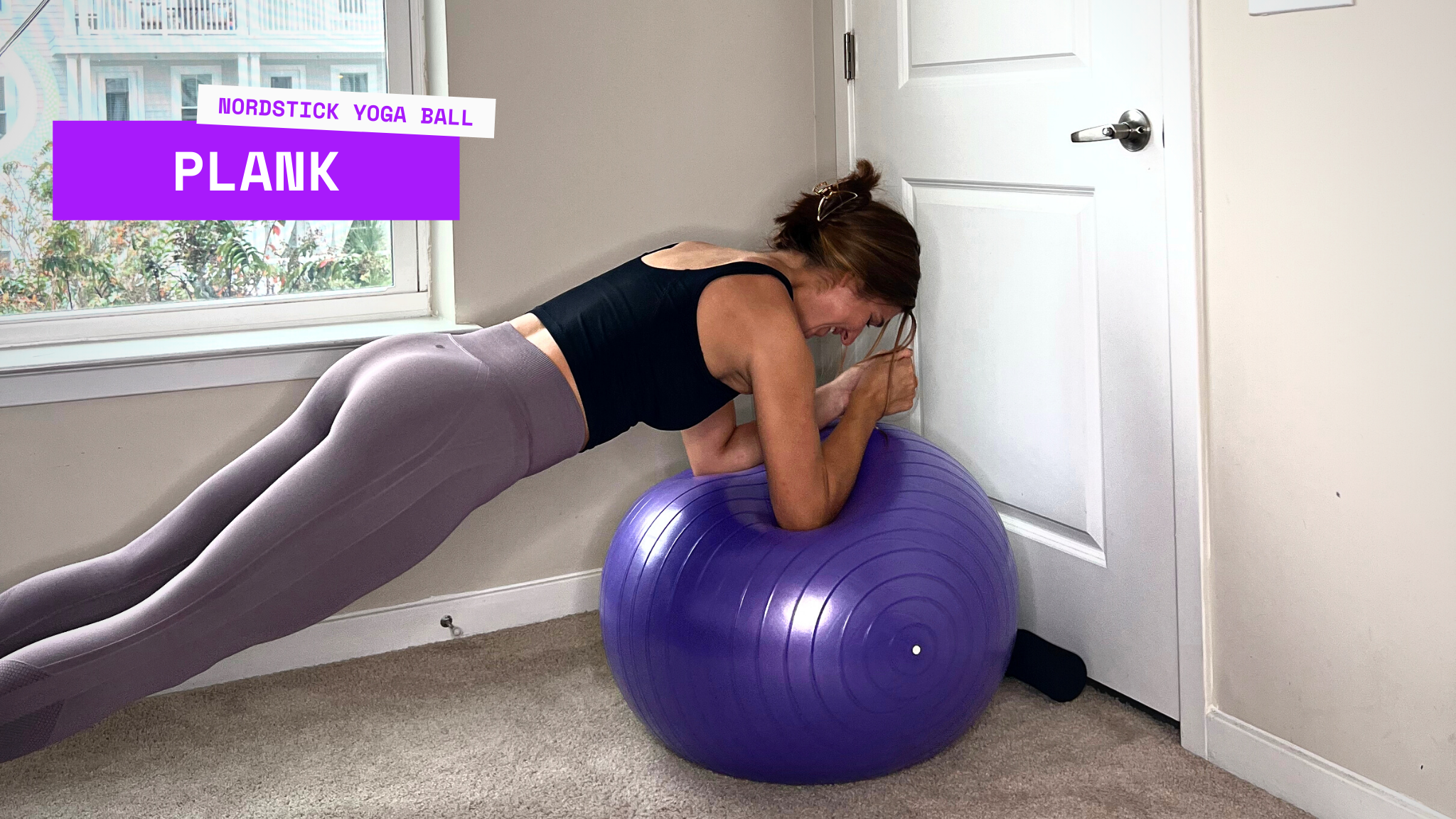Ready to target your quads with precision? The reverse Nordic curl offers a unique combination of strength and flexibility training tailored for your lower body. This article breaks down how to nail the form, explores its exclusive benefits, and integrates it effectively into your fitness plan.
Key Takeaways
-
The Reverse Nordic Curl is a versatile exercise that promotes quadriceps strength and flexibility, targeting the rectus femoris and enhancing muscle fiber elasticity.
-
Proper form in the Reverse Nordic Curls involves maintaining a straight line from shoulders to knees and controlling the eccentric phase of the movement to maximize muscle engagement and prevent injury.
-
The Reverse Nordic Curl can be adjusted for different fitness levels and goals, with recommended incorporation 1-2 times per week alongside other leg exercises for a balanced lower body workout routine.
Understanding the Reverse Nordic Curl
At the heart of a robust leg workout, Reverse Nordic Curls stand out as a powerhouse for sculpting and fortifying your quadriceps. This compound leg exercise is not your run-of-the-mill routine; it introduces an eccentric muscle contraction over an extensive range of motion, making it a formidable opponent against leg day monotony. So, what makes this exercise a significant asset for anyone looking to bolster their leg training arsenal?
The secret is in the challenge it throws down for your quads, pushing them to new heights of strength and stretching their flexibility to the max. This isn't just any old quad exercise; it's a game-changer that welcomes anyone looking to up their lower body game, as long as they're clear of any health hitches. So, let's cut to the chase and explore why this dynamic move is shaking up workout routines everywhere.
The Mechanics of the Exercise
When you perform Reverse Nordics, you’re engaging the four quadricep muscle groups:
-
the vastus medialis
-
vastus lateralis
-
vastus intermedius
-
the rectus femoris
This muscle group is particularly responsive when it is stretched, highlighting the Reverse Nordic Curl's ability to engage muscles that are often overlooked in other leg exercises, like the seated leg extension. What sets this exercise apart is its pronounced eccentric phase. During this phase, your muscles are actively lengthening under tension as you lean back from a kneeling position. It's as if you're performing a trust fall in slow motion, with your quads acting as your trusty safety net, catching you every time. This action not only works the quadriceps but also involves the knee joints, providing a well-rounded workout for the entire leg.
Maintaining a straight line from your shoulders to your knees is crucial, especially at the hips, to stretch the hip flexor muscles without compensation that would otherwise diminish the exercise’s impact. This alignment, with hip flexion maintained and knee flexion considered, is not only critical for the full engagement of the targeted muscles but is also a testament to the Reverse Nordic Curl’s meticulous design, which ensures a training stimulus that’s both comprehensive and rewarding, including the benefits of hip extension and neutral hip position.
Benefits for Quad Strength and Flexibility
Imagine your quadriceps not just growing stronger but also more pliable, allowing for movements that once felt out of reach. That’s the beauty of Reverse Nordic Curls; they’re not just about building muscle size but also about enhancing the elasticity of your muscle fibers. This increase in muscle fiber length translates to better mobility in both your hip flexors and quadriceps, setting the stage for improved athletic performance and daily functional movements.
Furthermore, as you extend your hips during the exercise, all four quadriceps muscles, including the often neglected rectus femoris, receive a thorough workout. Not only does this provide a balanced quadriceps strengthening effect, but it also ensures that the flexibility of the quadriceps anatomy is not left behind. The result? A harmonious blend of strength and flexibility that serves as the foundation for a robust and resilient lower body.
Comparing to Other Leg Exercises
Now, you may be thinking, “How does the Reverse Nordic Curl stack up against other popular leg exercises?” Let’s put it into perspective. The Reverse Nordic Curl brings something unique to the table. It’s the practicality for those pumping iron at home, a bodyweight alternative to machine-based exercises like leg extensions that can be just as effective in stimulating quad hypertrophy.
Compared to other leg exercises:
-
Leg press: great for increasing quad strength and size, but requires access to a machine
-
Squats: also great for quad strength and size but may require weights or equipment
-
Lunges: effective for quad strength and size but may be challenging for beginners or those with knee issues
-
Split squats: similar to lunges, but with a narrower stance, also effective for quad strength and size
The Nordic Hamstring Curl offers a bodyweight exercise option that can be done anywhere. You just need a door and a Nordstick (and a Nordpad for added comfort), and you have a practical and effective exercise for quad hypertrophy. The Reverse Nordic Curl focuses on the same muscle group.
Incorporating Reverse Nordics alongside multi-joint leg exercises like squats and deadlifts can create a more comprehensive leg workout regime. This single-joint marvel zeroes in on the rectus femoris, complementing the compound movements that often underutilize this particular muscle. In essence, it fills the gaps that other exercises might leave, ensuring your quads receive a well-rounded challenge.
The Nordic Hamstring Curl offers a bodyweight exercise option that can be done anywhere. You just need a door and a Nordstick(maybe even a Nordpad) for added comfort, and you have a practical and effective exercise for quad hypertrophy. The Reverse Nordic Curl focuses on the same muscle group.
Incorporating Reverse Nordics alongside multi-joint leg exercises like squats and deadlifts can create a more comprehensive leg workout regime. This single-joint marvel zeroes in on the rectus femoris, complementing the compound movements that often underutilize this particular muscle. In essence, it fills the gaps that other exercises might leave, ensuring your quads receive a well-rounded challenge.
Setting Up for Success: Proper Form and Technique
Mastering the Reverse Nordic Curl hinges on nailing the proper form and technique. Think of it as a symphony where every movement is orchestrated to produce a harmonious outcome. The stage is set with your body in a kneeling position, thighs, and torso aligned to form a straight line, setting the tone for an impeccable performance.
With your knees hip-width apart and feet flat on the ground, the foundation is as stable as the roots of an ancient oak. Engage your core and glutes as if bracing for impact; this engagement is your armor, shielding your pelvis from instability and your lower back from arching. Then, commence the slow and deliberate lean back from the knees, maintaining that unwavering straight line from your shoulders to your knees.
Keep your head and neck neutral, as poised as a ballet dancer, while your quadriceps orchestrate the movement, pulling you back up to the starting position after you’ve reached your peak angle. Remember, the breath is your rhythm; inhale on the descent, exhale on the rise.
Preparing Your Body and Space
Before diving into the Reverse Nordic Curl, let’s create the perfect environment for success. Your body must be a fortress of stability, with a straight back and engaged core to withstand the demands of the exercise. Squeeze your glutes and tighten your abs, not just for the aesthetic appeal but to ensure a posture that’s as solid as a rock throughout the movement.
Prepare your space with the same attention to detail. Here are some tips to maintain proper form:
-
Use a pad or cushion under your knees to prevent discomfort and allow you to focus solely on your form.
-
Ensure your feet are securely anchored, either by a bench or a partner’s steady hold, to provide stability and support.
-
Have a trusted spotter by your side to help you with your exercises and ensure your safety.
These small steps can pave the way for significant gains in your workout.
Executing the Movement
With your stage set, it’s time to perform the Reverse Nordic Curl with the grace of a seasoned athlete. Position yourself on the pad, knees planted firmly, feet anchored, and your upper body poised for action. As you initiate the lean back, imagine your body as a single, unwavering column from your shoulders to your knees, a testament to the stability and control that are the hallmarks of this exercise.
Lean back only as far as your body permits, respecting its limits, then let the strength of your quads carry you back to the starting position. This motion is not about speed; it’s about the art of control, feeling every fiber of your muscles engage as you move through the range of motion. It’s this meticulous execution that transforms the Reverse Nordic Curl from a mere exercise into a sculpting tool for your quads.
Common Mistakes and How to Avoid Them
Embarking on the journey of perfecting the Reverse Nordic Curl is not without its pitfalls. A common misstep is succumbing to the allure of speed, moving too quickly and forgoing the muscle control that is the essence of this exercise. To combat this, adopt a tempo that’s as measured as a metronome, a slow count of five as you lower down, ensuring each muscle is engaged and each movement is deliberate.
This controlled tempo is not just a practice in patience; it’s a technique that trains your muscles to move with precision, correcting common mistakes before they become habit. By heeding this advice, you’re not just avoiding errors; you’re building a foundation of strength and flexibility that will stand the test of time.
Progressions and Regressions: Adapting the Reverse Nordic Curl to Your Fitness Level
Not everyone is at the same stage in their training, and the Reverse Nordic Curl respects that. It’s an exercise that can be honed to fit your current level, whether you’re a beginner taking your first steps or a seasoned athlete seeking new summits to conquer. From the novice who needs to reign in the range of motion to the expert who craves an added challenge, there’s a version of the Reverse Nordic Curl for everyone, including the banded reverse nordic curl variation. The reverse nordic curl targets different fitness levels, making it a versatile workout option.
This adaptability is a cornerstone of the exercise, ensuring that it remains a viable option for all. As you progress, you can unfold the full potential of the Reverse Nordic Curl, gradually expanding its intensity to match your growing strength and confidence, following the ascending exercise strength curve.
Beginner Modifications
If you’re at the start of your fitness journey, fear not—the Reverse Nordic Curl can be tempered to welcome you with open arms. Start with a shorter range of motion that aligns with your current strength level, a conservative progression that respects your body’s capabilities. As your muscles adapt and your confidence swells, you’ll find yourself delving deeper into the movement, inching closer to the full expression of the exercise.
You can even use Omnibands to assist you in getting used to the motion. Just mount it on the upper portion of your door, and hold on to the Omnibands as you make your descent.
And let’s not forget about comfort; a mat or a pad under your knees can be the silent hero, providing the support you need to focus on form and execution and preventing knee pain. This gentle introduction to the Reverse Nordic Curl ensures that you build a foundation of strength and flexibility that will carry you forward.
Advanced Progressions
For the fitness veterans among us, the Reverse Nordic Curl can be a canvas for creativity and challenge. Introducing additional weights, like a weight plate or dumbbell can elevate the resistance, asking more from your quads with every lean back. Arm movements, whether overhead or extended in front, add an extra layer of difficulty, turning the exercise into a full-body engagement.
When the usual routine begins to feel less daunting, mechanical drop sets can inject a fresh challenge, pushing you to perform the exercise with a progressively shorter range of motion after reaching initial muscle fatigue. These advanced progressions are the spice that keeps the Reverse Nordic Curl exciting and growth-inducing.
Adapting for Specific Goals
The beauty of the Reverse Nordic Curl is in its versatility; it can be molded to fit your unique fitness aspirations. By tweaking the range of motion or the angle of hip flexion, you can tailor the exercise to strengthen specific muscle groups or enhance flexibility.
For those aiming to push their limits, expanding the range of motion until the upper back or shoulders touch the ground can be the ultimate test of strength and control. This exercise is not just about the ascent; it’s about finding the right path for your journey.
Whether your goal is to specifically target the rectus femoris or to improve flexibility, the Reverse Nordic Curl can be your go-to exercise, adaptable and ready to serve your needs.
Integrating the Reverse Nordic Curl into Your Workout Routine
As we draw closer to making the Reverse Nordic Curl a staple in your routine, let’s strategize its integration. This exercise can step in to replace a current quad-focused routine, sliding seamlessly into your program like a missing puzzle piece. With a recommended frequency of 1-2 times a week, it can complement your regimen without overwhelming your muscles, striking the perfect balance between challenge and recovery.
But what if the curl starts to feel less challenging? It’s time to level up by adding weights or altering your arm positioning, ensuring that the exercise continues to push your boundaries as you evolve.
Frequency and Volume
Determining the ideal frequency and volume of your Reverse Nordic Curl workouts is like fine-tuning an instrument for optimal sound. Beginners should aim for a once-a-week cadence with three sets of four to eight reps, allowing the body to acquaint itself with the new stimulus. It’s essential to avoid training the same muscle group on consecutive days, giving your muscles the rest they need to recover and grow stronger.
Recovery is not just a pause; it’s an active process that involves proper nutrition and rest. It’s the time when your muscles repair and prepare for the next session, ensuring that each Reverse Nordic Curl workout contributes to your overall progress.
Pairing with Other Exercises
To sculpt a well-rounded leg workout, consider the companions of the Reverse Nordic Curl. Seated leg extensions or machine leg curls can join forces with the curl, providing a balanced attack on both the quadriceps and hamstrings. Romanian deadlifts make a formidable pair, targeting both the front and back of the legs for a thorough lower body challenge.
Bear in mind, the Reverse Nordic Curl is predominantly a quad-strengthening exercise, so it’s wise to replace a similar exercise in your routine with it rather than simply adding it on. This approach will ensure a balanced development without overloading your legs.
Recovery and Injury Prevention
Long-term success with the Reverse Nordic Curl depends on a commitment to recovery and injury prevention. By enhancing eccentric leg strength, this exercise acts as a guardian against injuries, particularly those that occur during high-velocity movements where muscles must rapidly lengthen. Moreover, the improved strength and mobility in the hip flexors contribute to better pelvic alignment, shielding your lower back from undue stress and warding off potential pain.
However, even the most valiant warriors need rest. Allowing adequate recovery periods after performing Reverse Nordics is pivotal to maintaining muscle integrity and preventing overuse injuries. Listen to your body’s whispers before they become screams; respecting its signals is crucial for recovery and ensuring that the Reverse Nordic Curl continues to be a beneficial addition to your fitness regimen.
Summary
As we conclude our journey through the realms of the Reverse Nordic Curl, let’s revisit the key milestones. This exercise emerges as a beacon of strength and flexibility, offering a full spectrum of benefits that extend beyond mere muscle building to include enhanced mobility and injury prevention. By mastering the proper form and technique, you unlock the potential to transform your lower body’s performance.
Whether you’re a beginner or a seasoned athlete, the Reverse Nordic Curl adapts to your fitness level, offering modifications and progressions to meet your needs. Integrated thoughtfully into your workout routine, it promises to challenge and grow with you, ensuring that your quest for leg strength and flexibility is both successful and sustainable.
Frequently Asked Questions
What do reverse Nordics do?
Reverse Nordics mainly work on improving lower back strength and help to activate the quadriceps muscle group, making the exercise more holistic than other leg exercises. They require the lower back muscles to maintain proper form and can reduce the risk of back pain.
Are reverse Nordic curls good for hypertrophy?
Yes, reverse Nordic curls are effective for building strength and hypertrophy in the quads.
What is the difference between reverse Nordic curls and leg extensions?
The main difference between reverse Nordic curls and leg extension is the position of the quadriceps - in reverse Nordic, the quadriceps are fully lengthened at both ends, while in leg extension, the quadriceps are fully shortened at both ends. This directly affects the muscles targeted and the range of motion in each exercise.
How often should you do reverse Nordic curls?
You should do reverse Nordic curls once a week with 3 sets of 4-8 reps. Aim for 4 reps if you are new to the movement.
Are reverse Nordic curls safe?
Yes, reverse Nordic curls are safe as they are a relatively safe exercise without any external load, and they are not inherently more dangerous than any other exercise.









































Leave a comment
This site is protected by hCaptcha and the hCaptcha Privacy Policy and Terms of Service apply.